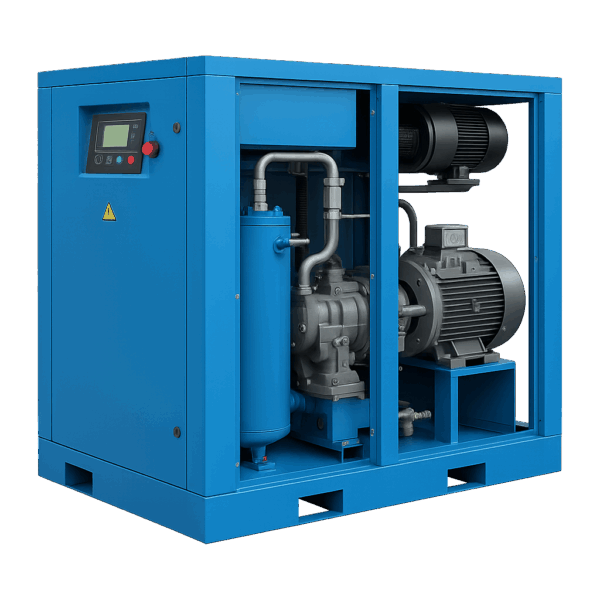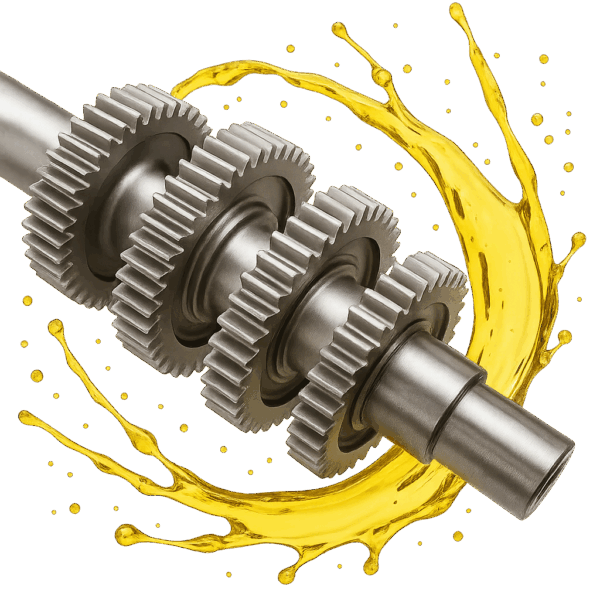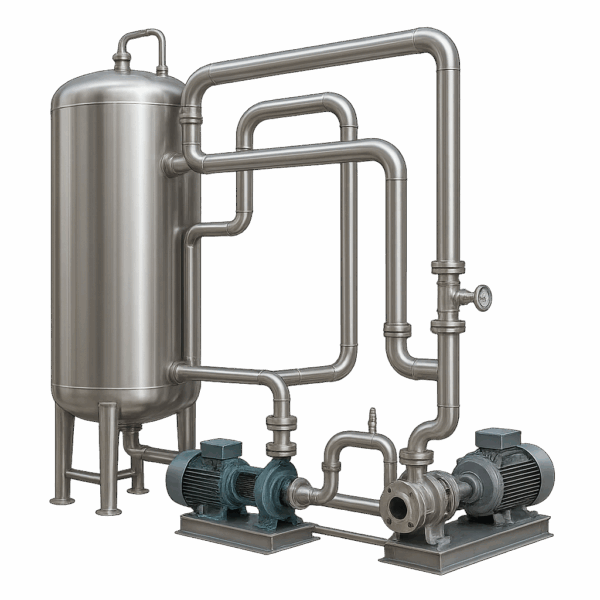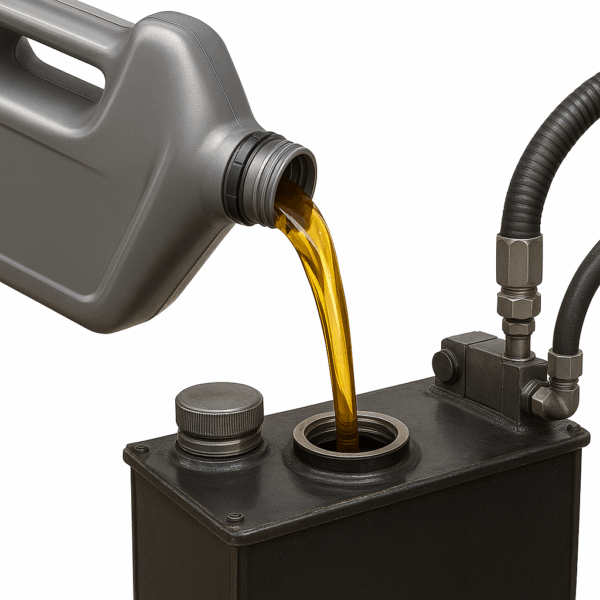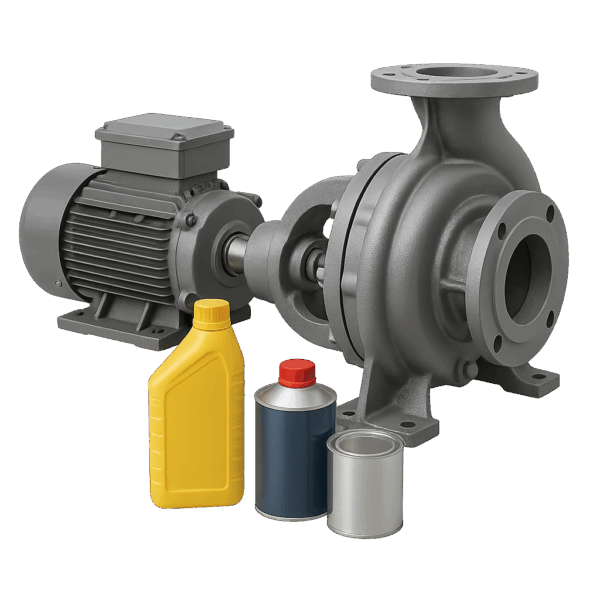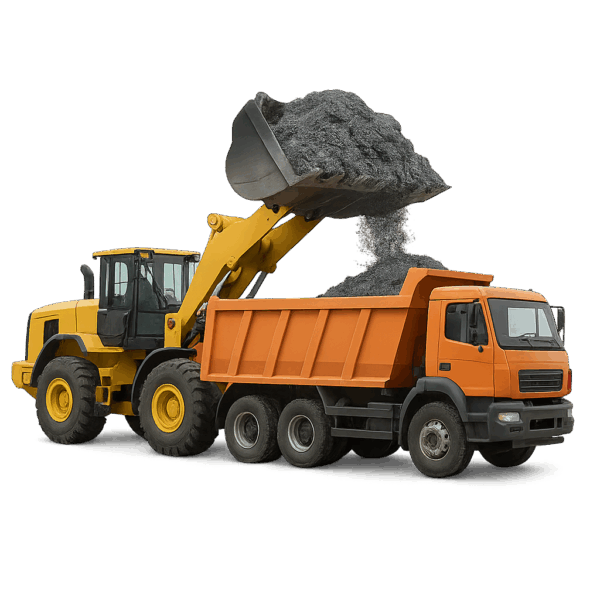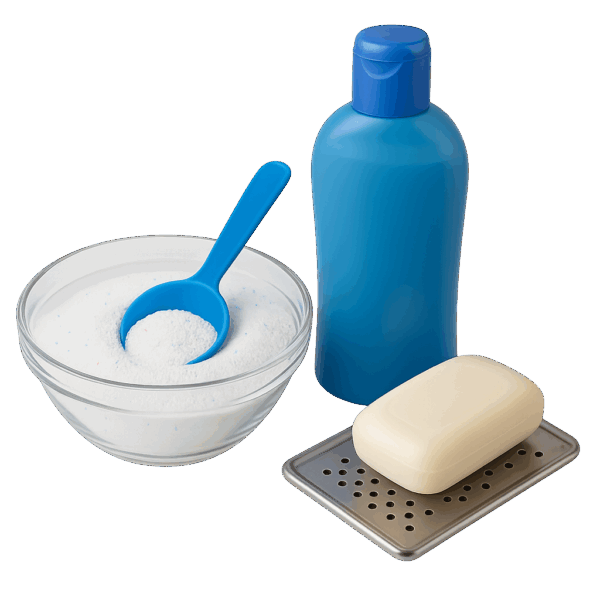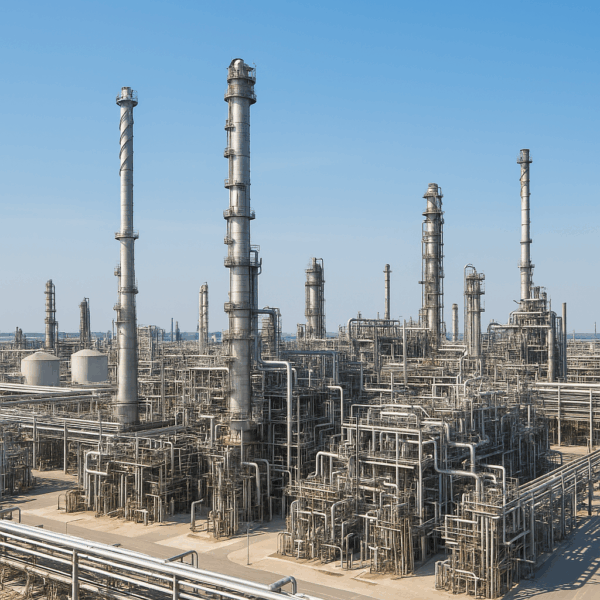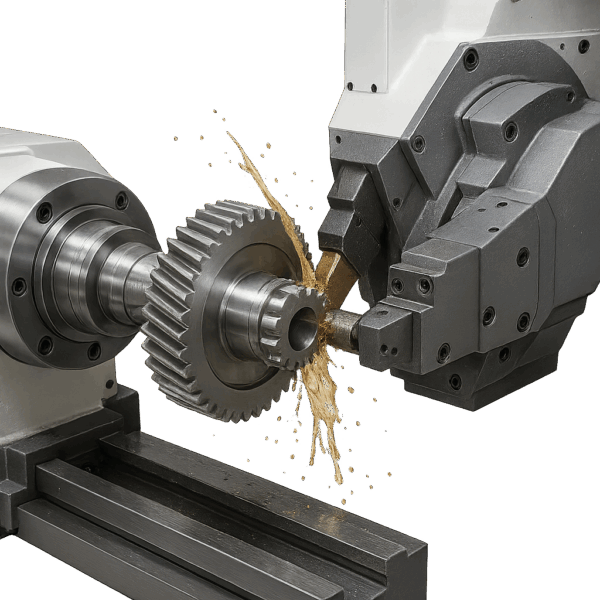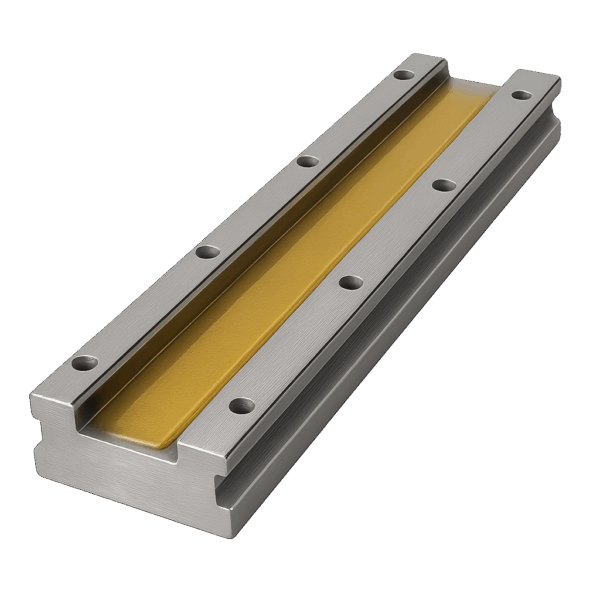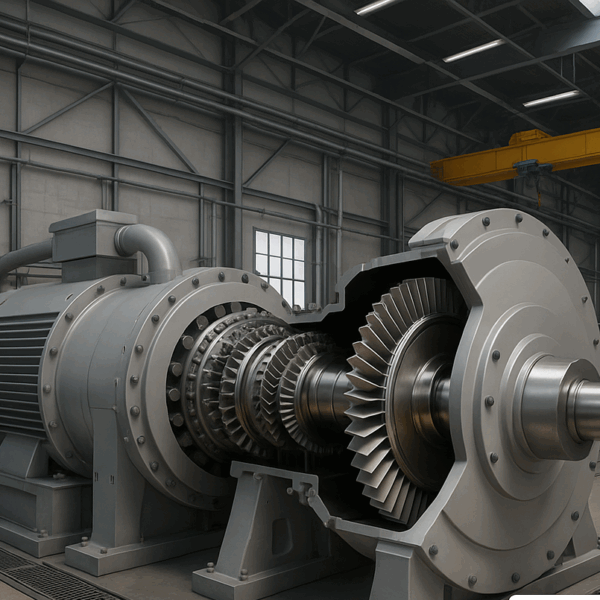L
Air Compressor Oil
A compressor oil is used to lubricate both the working parts and the pressurized spaces in a compressor. The purpose of the lubricant in the pressurized section is not only to reduce friction and wear but also to improve sealing of the pressurized spaces and to provide cooling.
For Reciprocating Compressors a lubricant is required for the bearings, pistons, rings, cylinders and valves that has enough antiwear additives and suitable viscosity .The pistons and valves reach temperatures of 2200C to 3000C and the oil film on the surfaces of these components must not form soft and hard carbon.
Good demulsibility properties are also necessary to aide water/oil separation as the oil containing air is cooled and the water vapor condenses.
Circulation Oil
Circulating Oil is premium quality, solvent refined, high viscosity index and mineral oils specially chosen for their ability because they play a critical role in lubricating and protecting key components, such as bearings and gears, in systems where a continuous flow of lubricant is required. This continuous flow ensures that moving parts are consistently coated with oil, reducing friction, wear, and heat generation.
Circulating systems need to operate in varying conditions, so it is vital you have a lubrication solution that works consistently no matter the circumstance so they must have Excellent water-separating properties to minimize the formation of emulsions , Good oxidation resistance , good Protection against rust and corrosion , enough foam resistance. Circulation oil has the ability to rapidly separate from water, prevention of emulsion and sludge build up, which hampers lubricating efficiency.
Heat Transfer Oil
- Function:
They circulate through a closed loop system, absorbing heat from a heat source and transferring it to the desired process area, enabling indirect heating. Heat transfer oils are Formulated to promote energy efficient heat transfer performance , to control Oxidation and creating thermal stability that helps resist harmful sludge and coke formation and contributes to long oil service life . Low temperature fluidity assists rapid system start-up , Low vapour pressure at elevated temperatures helps minimise evaporation, vapour lock and pump cavitation and Efficient low pressure operation avoids the need for expensive high pressure pipe-work and heat exchanger systems.
Heat transfer oils have many applications such as used in various industrial processes like plastic molding, chemical reactions, food processing, asphalt production, metal heat treating , food processing , petroleum and wax processing where precise temperature control is crucial.
Hydraulic Oil
Although it is commonly used in the transfer of power, hydraulic fluid can act as a sealant, coolant and lubricant within machinery and equipment. Hydraulic oil can be used for Forklift Trucks ,Log Splitters ,Automotive Lifts ,Wright Standers . Snow Ploughs (Snow Plows) ,Skid Steers (Skid-steer Loader and Skidsteer) ,Aircraft (aviation) ,Air Tools ,Tractors ,Cruise Ships and the Marine Industry. Superior hydraulic oils are available in a wide range of ISO and SAE grades to meet these and many other critical machinery challenges, such as high speed , high pressure , high temperature , very low temperature in winter , turbine – grade temperature and those used for food processing and packaging are available .for a hydraulic oil to be useful it needs to have the below properties:
- Non-compressible
- Thermally stable, within a range of operating temperatures
- Fire resistance
- Non-corrosive & Anti-wearing to its system
- Low tendency to cavitate
- Tolerance to water (resistance to water contamination)
- Total water rejection
- Constant viscosity, regardless of temperature & Long Life
Industrial Gear Oil
Even when torque is transferred, gears will have sliding and rolling contact, leading to frictional losses and heat generation. Therefore, the lubricants selected for these applications must be able to significantly reduce these frictional losses and cool the gears. Industrial gear oils can be formulated using mineral base oils or synthetic base oils.
Various additives are incorporated into gear oils to enhance their performance characteristics and the viscosity of gear oil is a critical parameter that determines its flow characteristics and lubricating ability. The lubricant must also have a high viscosity at operating temperature such that the formed film can sufficiently support the load while cooling the gears. Another point to consider is the pour point of gear oil ,that refers to the temperature at which the oil begins to solidify and lose its flow properties. Available industrial gear oils can be classified into four main types are Synthetic Gear Oil, Rust and oxidation inhibited (R&O) gear oils, Extreme pressure (EP) gear oils , Compounded gear oils.
Lead Concentrate
Lead is also used in organ pipe making, electric cable coverings, solder for plumbing, lead-acid storage batteries, ammunition, and as a radiation shield in x-ray rooms. Concentration of lead ore happens after the ore is removed from the mine, it is treated at a concentrating mill. Concentrating is generally removing the waste rock from the lead. The ore is crushed and grounded at the mill making it particles of diameters of 0.1 millimeter or less which appear to be finer than table salt, giving it granulated sugar like texture.
Linear Alkyl Benzene (LAB)
Linear alkylbenzene (LAB) is a a family of organic compounds and acost-effective and biodegradable intermediate in the production of detergents and surfactants. Kerosene is the raw material of linear paraffin with high purity, which are finally converted to linear olefins by dehydrogenation. The linear mono-olefins react with benzene in the existence of the catalyst to produce LAB which is used to produce linear alkylbenzene sulfonate (LAS), as a biodegradable detergent.
Linear alkylbenzene (LAB) is produced by reacting benzene with alkyl groups containing 10 to 13 carbon atoms that are derived from normal (straight-chain) paraffins or linear alpha-olefins. Nearly all LAB is converted to linear alkylbenzene sulfonate (LAS) by sulfonation
Liquefied Natural Gas (LNG)
LNG is odorless, colorless, non-toxic and non-corrosive. The liquefaction process involves removal of certain components, such as dust, acid gases, helium, water, and heavy hydrocarbons, which could cause difficulty downstream. The natural gas is then condensed into a liquid at close to atmospheric pressure by cooling it to approximately −162 °C (−260 °F) . The heating value depends on the source of gas that is used and the process that is used to liquefy the gas.
A typical value of the higher heating value of LNG is approximately 50 MJ/kg or 21,500 BTU/lb. A typical value of the lower heating value of LNG is 45 MJ/kg or 19,350 BTU/lb.
Liquorice
Liquorice grows best in well-drained soils in deep valleys with full sun. It is harvested in the autumn two to three years after planting . Licorice root has a long history of use, going back to ancient cultures. It was used traditionally for treating a variety of conditions, including lung, liver, circulatory, and kidney diseases.
Licorice root and extract is promoted as a dietary supplement for conditions such as digestive problems, menopausal symptoms, cough, and bacterial and viral infections. Licorice gargles or lozenges have been used to try to prevent or reduce the sore throat that sometimes occurs after surgery. Licorice is also an ingredient in some products for topical use appliable to the skin. due to its sweetness and flavoring characteristics, licorice extract is mostly used in the confectionery industry.
Process Oil
Application Of Process Oil
- Polymers , elastomer and Tires: Process oils are used to improve the workability of elastomers without changing their physical properties. This helps ensure the quality of the final product.
- Optical cables: Process oils are used in oil-based gels that flood rigid tubes containing optical fibers.
- Textiles: Process oils are used in the manufacturing of textiles.
- Metalworking: Process oils are used in metalworking.
- Asphaltic sheets, inks, and paints: Process oils are used in the manufacturing of asphaltic sheets, inks, and paints.
- Defoamer : In oil based defoamer formulations, the oil can comprise up to 90% of the formulation. It functions as a carrier fluid, in order both to spread over the surface of the aqueous system to neutralise the surfactant molecules and to transport the hydrophobic ingredients of the defoamer to the double layers of surfactant molecule that stabilise the foam bubbles in order to destroy them.
Slideway Industrial Oil
Dimensional accuracy and surface quality of the workpieces to be machined so Slideway Oil must be carefully formulated somehow hat can provide controlled frictional properties for high precision machining, compatibility with aqueous metal working fluids and corrosion protection of parts and equipment.
stick-slip is a big problem in machining , The cause of stick-slip is frictional vibration resulting from the constantly changing friction between the machine-tool toolholder – the tool and the work-piece – or slide and its slideway. The same applies to linear guide systems. Special slideway oils and their additives assist the formation of lubricant films on the surfaces and reduce the stick-slip problem at its minimum possible amount . Slideway Oils have been developed with adhesiveness which prevents lubricants from being washed away from slideways. They are designed for use with combinations of cast iron, steel and non-metallic way material and can be used for lubrication of ball screws, linear guides, headstocks, translating screws.
Turbine Oil
Turbine oil has multiple industrial applications. It lubricates air and gas compressors, as well as all types of hydraulic devices, bearings, reduction equipment, and turbine runner bosses. In addition to its advanced lubrication properties, turbine oil provides efficient cooling and protects the system from sludge, rust, and corrosion. Turbine oil is often classified according to the turbine type, such as gas turbine oil, steam turbine oil, etc. turbine oils consist of base oil and additives, The base oil makes up 97% or more of the turbine oil. It can be synthetic, semi-synthetic, or mineral.
Additives typically make up only 1% of turbine oil. Although far smaller in quantity, they play a fundamental role in the turbine oil formula. Advanced additives are added to the oil to minimize foaming, prevent rust and oxidation, separate water, etc. Turbine oil is exposed to high temperatures and pressures. Its advanced formula helps it maintain good properties to ensure the continuous lubrication and protection of the turbine. Some of them are corrosion resistance, enhanced anti-oxidation, anti-foaming features, proper viscosity, excellent anti-wear property and high stability

